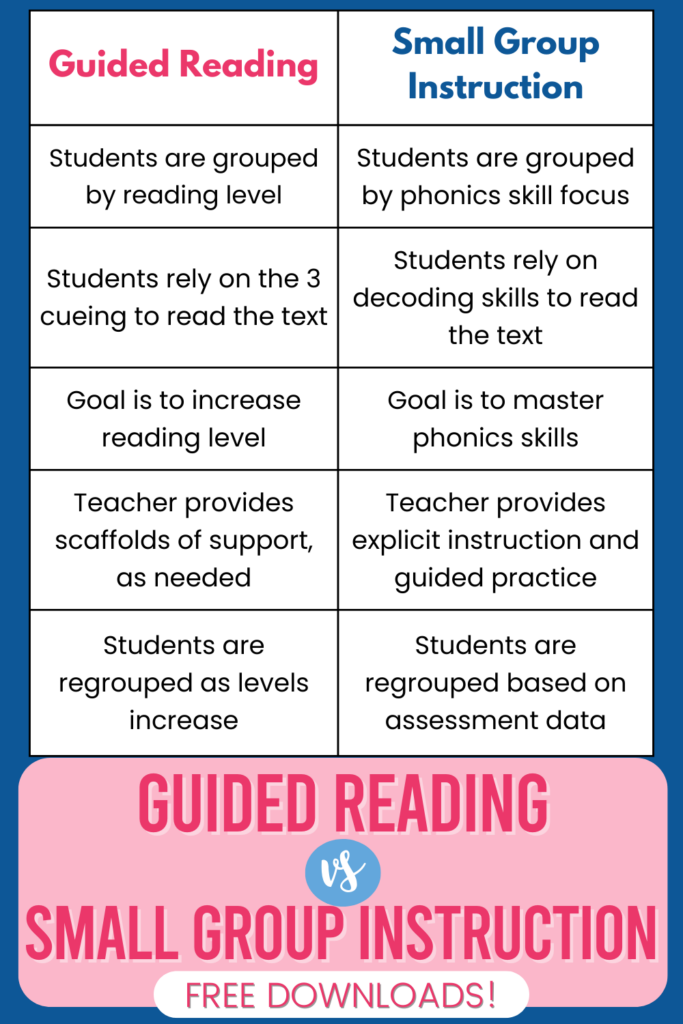
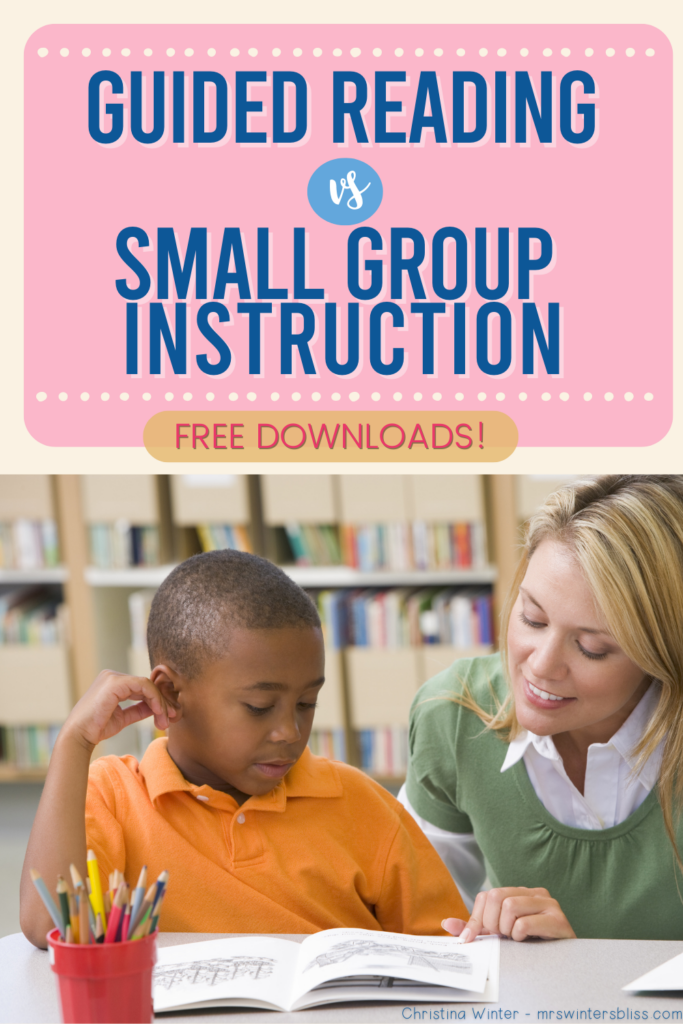
In this post, I explain the differences between guided reading and small group instruction. I dive into some of the problems with guided reading and discuss why small group instruction is a more effective way to teach our beginning readers. Then I offer you decodable books you can use to replace your leveled guided reading books and offer you 5 free decodable books and teacher lesson plans.
For many years, one of the main ways I taught my students to read was through guided reading. I conducted running records and grouped students according to reading level. Then I met with them a few times a week to read books at their instructional level. I know I’m not the only one. Experts estimate that guided reading is happening in 70-80% of elementary classrooms. But evidence suggests that this common practice may be less beneficial than we think.
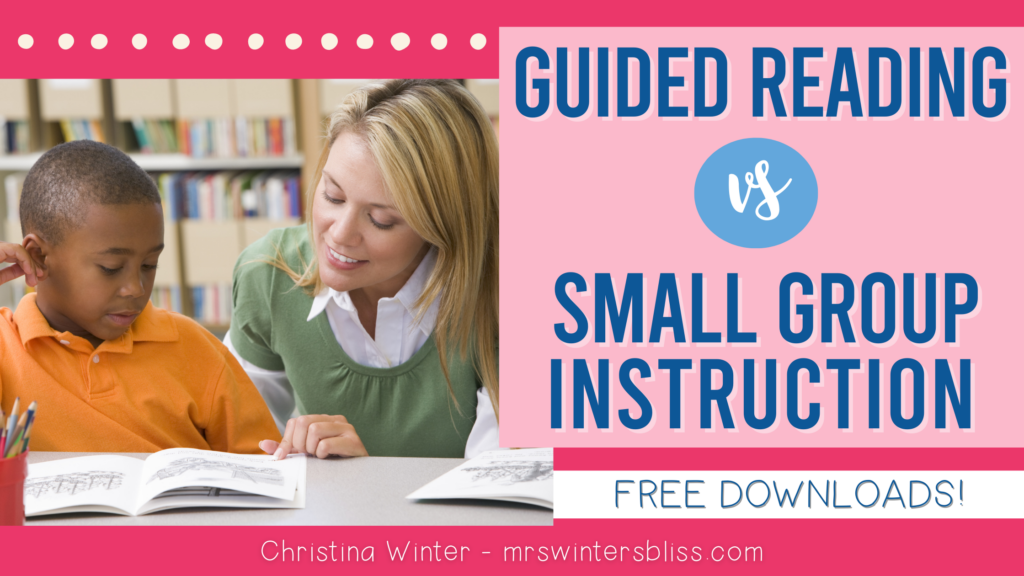
As I’ve learned more about the science of reading, I’ve become aware of the problems with guided reading and the lack of evidence supporting it. I’ve come to understand that there are better, more effective ways to help students learn to read.
Today I want to help you understand the differences between guided reading and small group instruction. I will discuss some of the problems with guided reading and explain why small group instruction is a more effective way to teach our beginning readers. Finally, I will leave you with SoR-aligned decodable books that can replace your guided reading books and give your students the targeted instruction and practice they need to become successful readers.
What is Guided Reading?
Guided reading is an approach to teaching reading that involves grouping students according to their reading level. This level is usually determined using the Fountas & Pinnell Benchmark Assessment System or running records. During guided reading, students in a small-group setting individually read a text that is at their instructional reading level.
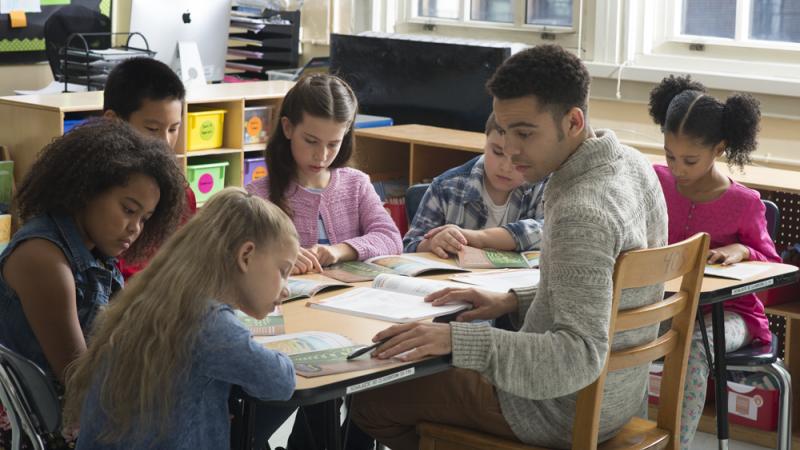
The goal of guided reading is to develop independent readers. During guided reading, students read silently or whisper read and the teacher listens in. The teacher supports each reader and offers strategies for processing new texts at increasingly challenging levels of difficulty.
The Problems with Guided Reading
A big problem with guided reading is that the running records and the assessment system for grouping students really just measures how good students are at three-cueing. Early leveled books include words that students simply cannot yet sound out. So instead, students rely on (and are encouraged to rely on!) pictures and context, and maybe the first letter of the word. This tells a teacher nothing about the phonics knowledge a student has (or doesn’t have) but only how good they are at three-cueing.
Another criticism of guided reading is that there are too many levels and a lot of overlap in the levels. Teachers spend too much instructional time trying to provide kids with instruction at their exact level. A teacher may spend 15-20 minutes with a group of students at level D, and then 15-20 minutes with a group at level E when they really aren’t that different at all. Even if the levels were accurate, the reason a student is reading on that level may be different.

Finally, while some of the strategies within guided reading (pre-teaching vocabulary, accessing prior knowledge, or questioning students after a reading) are based in research, at this time there are no convincing studies of the efficacy of guided reading itself. It is not a research-based practice.
So if teachers should no longer be doing guided reading in the classroom, what should they be doing? The answer is small group instruction.
How is Small Group Instruction Different from Guided Reading?
Many educators use the terms guided reading and small group instruction interchangeably, but the two things are not the same.
The key difference between guided reading and small group instruction is that in small group instruction, you form the groups based on a shared skill deficit. Instruction focuses on filling in identified gaps in student learning and allows a teacher to target individual student needs. Small groups may include students who are at different places in their reading journey, but they still share a common skill deficit.
When you group students this way and use SoR-aligned resources to support them, your instruction is much more effective than traditional guided reading. Small group instruction helps students build the strong decoding skills they need to become fluent, proficient readers.
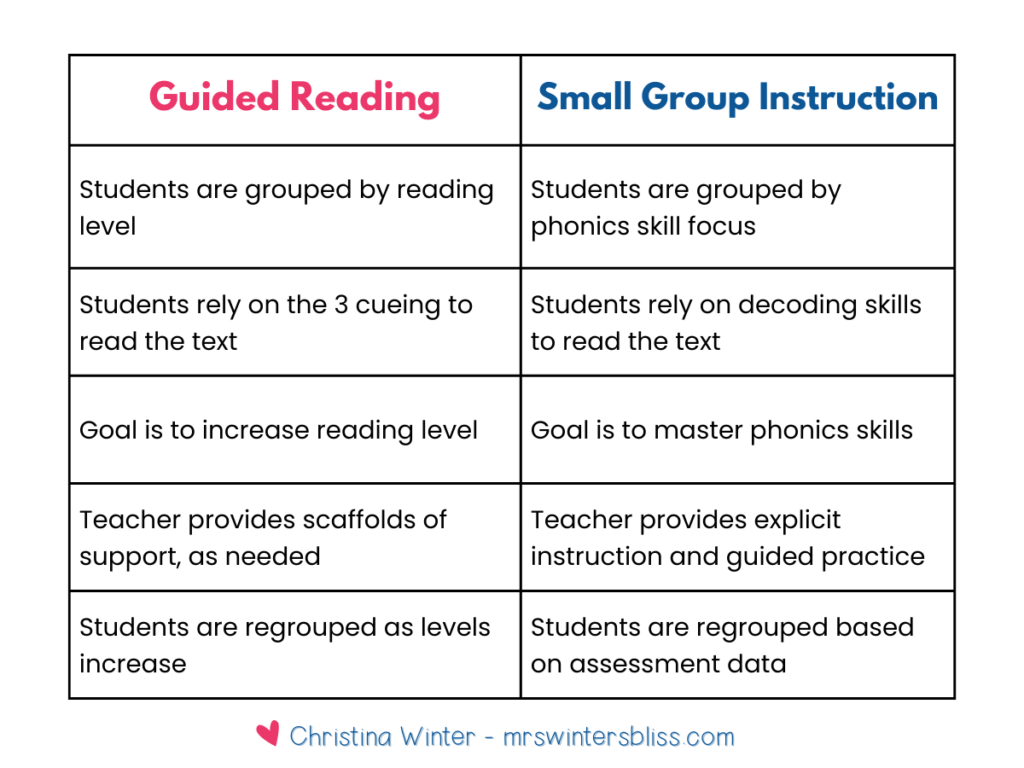
How to Group Students for Small Group Instruction
Many teachers are unsure of how to group their students since we have begun to move away from guided reading and leveled books. Small groups should be grouped and regrouped by a shared skill deficit.
To properly group your students, you need a strong assessment system. You need data from a universal screener to identify students who might be at risk of difficulties in learning. This will give you a general sense of how to group students.
Next, diagnostic assessments confirm the initial screening results. They help you to refine your groupings by determining a student’s specific difficulties.
If your school does not provide you with screeners or assessments you can use to group your students, I recommend I recommend these Phonics Screeners bundle for Kindergarten 1st and 2nd grade.
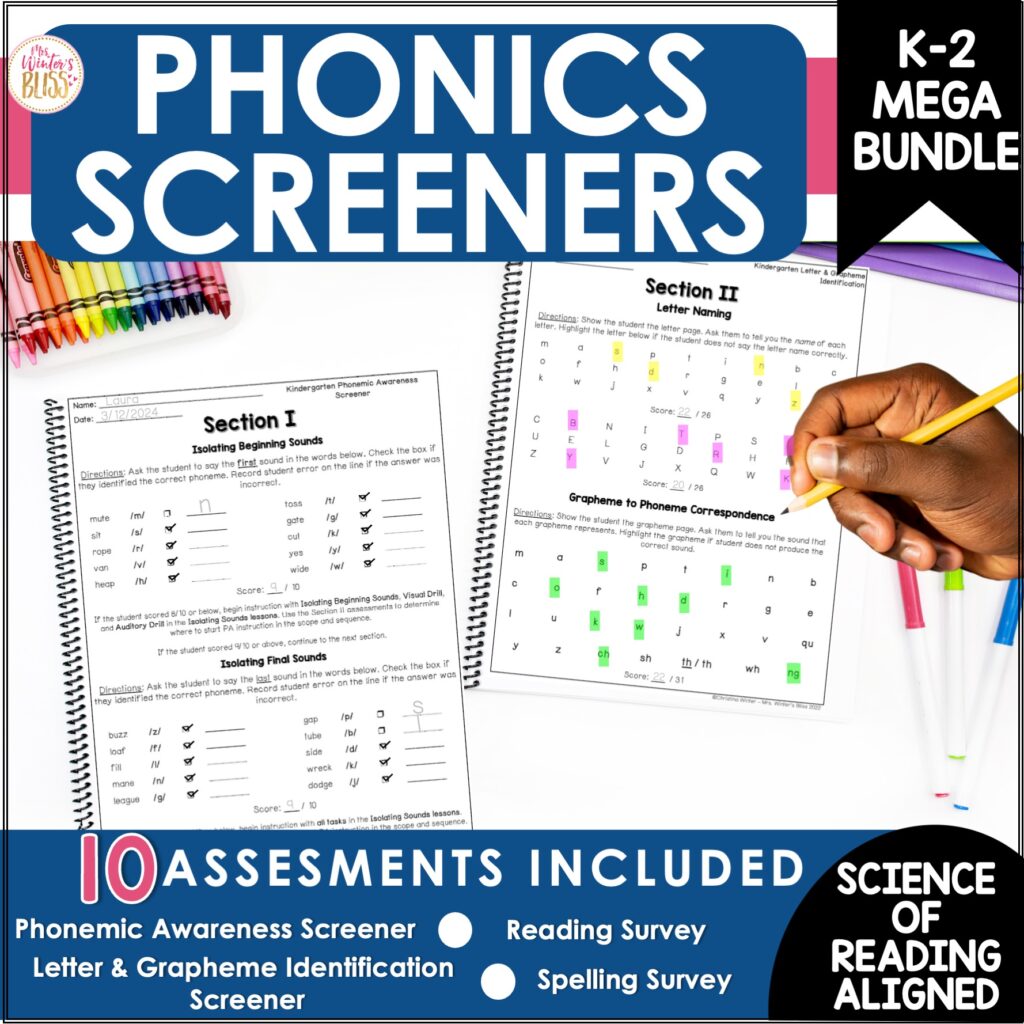
This bundle of K-2 assessments includes phonics screeners for:
- Phonemic Awareness Screener (for K and 1st grade)
- Letter & Grapheme Identification
- Reading Survey
- Spelling Survey
- Autofill Student Data Trackers and MORE!!
In addition to helping you group students for small-group instruction, these screeners can be used as a diagnostic tool at reading benchmark periods (BOY, MOY, EOY), for report cards, or as a pre-assessment and post-assessment to measure student growth.
Click here to take a closer look at everything included in the K-2 Phonics Screeners Bundle!
Finally, weekly progress monitoring and observation will help you adjust your groups. They are flexible. As needs change, groups change.
What to Teach in Small Group Instruction
In a small group, you provide students with targeted remediation and review that they need to master the skill you have identified as their need. Skills you will work on in small groups include:
- Phonemic awareness
- Phonics
- Fluency
- Vocabulary
- Comprehension
There are a ton of great SoR-aligned activities you can do in small group. If you are looking for books to replace your leveled readers, decodable books are the perfect option for you!
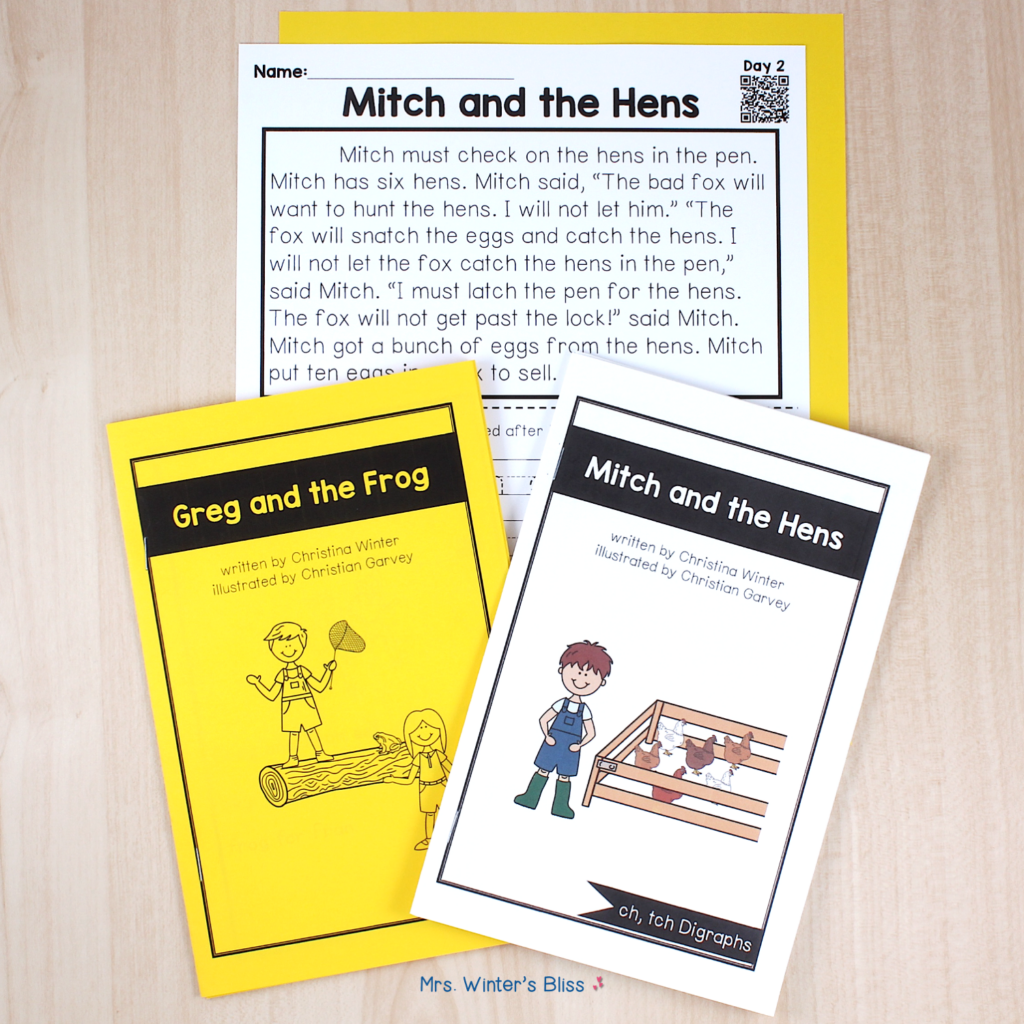
The science of reading shows us that it is essential that there is a tight connection between what children read and what they have been taught. Decodable texts give students practice applying the skills that you have taught to real reading experiences. This connection is essential for building a faster foundation in early reading. As studies have shown, students who use decodable controlled text in their early reading instruction get off to a stronger start in their reading instruction.
Decodable Books with Comprehension Questions
My decodable books with comprehension questions and explicit teacher lesson plans have all you need to give your students a strong foundation in early reading! This SoR-aligned resource contains 60 decodable books that align with a research-based, systematic phonics scope and sequence.
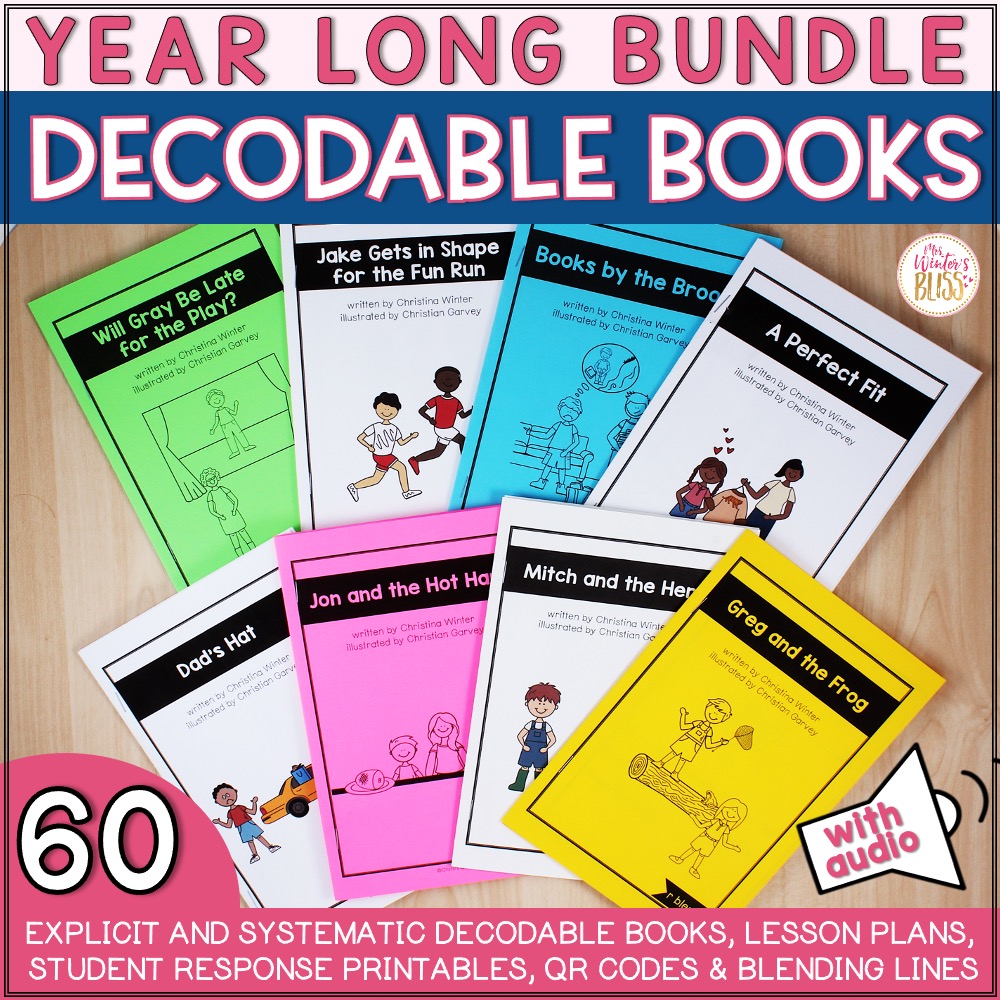
Included with each book:
💗 explicit lesson plans with suggested pacing
💗 activities for before, during, and after reading
💗 blending lines to practice skills and frontload before reading
💗 written and oral comprehension response questions specific to the passage
💗 audio recording for those students who may need extra support
💗 write and retell story response questions
💗 printable passages give students the opportunity to re-read and build fluency
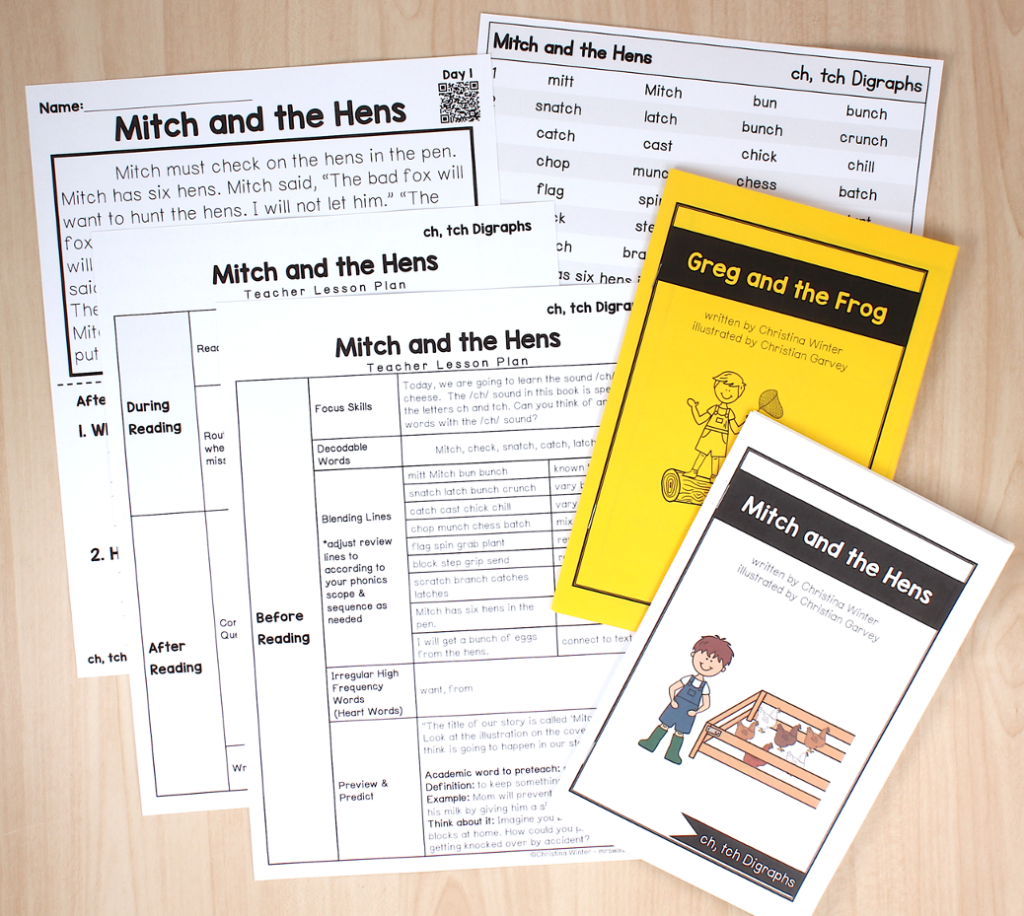
These decodable books are phonics-based texts. They contain target phonics skill words, previously taught phonics skill words, and irregular high-frequency words.
Curious to get a better understanding of how to use these decodable books? In this blog post, I outlined an explicit routine for using these decodable books for small-group instruction.
Are you ready to begin using decodable books in your classroom? To help get you started, I’m happy to offer you 5 FREE decodable books! You’ll get explicit lesson plans for each book, along with activities for before, during, and after reading to strengthen phonics skills!

As I learn more and more about how children really learn to read, I have to remind myself that when we know better, we can do better. I hope the information I’ve shared here today will help you understand the downfalls of guided reading and motivate you to provide your students with more targeted skills-based small group instruction.
-shop this post-
-
Sale Product on sale
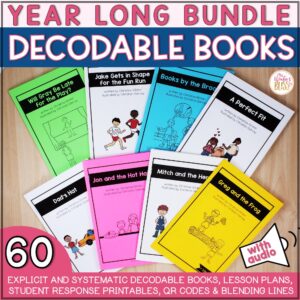 Decodable Books BUNDLE – Comprehension Questions aligned to Science of ReadingEarn 0 Reward Points
Decodable Books BUNDLE – Comprehension Questions aligned to Science of ReadingEarn 0 Reward Points$60.00Original price was: $60.00.$48.00Current price is: $48.00.Rated 5.00 out of 5 based on 6 customer ratings -
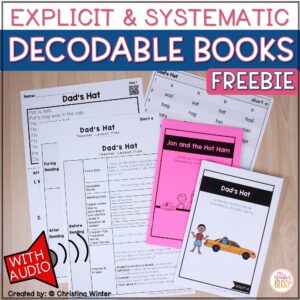 FREE Decodable Books with Comprehension Questions$0.00Rated 4.96 out of 5 based on 24 customer ratings
FREE Decodable Books with Comprehension Questions$0.00Rated 4.96 out of 5 based on 24 customer ratings









